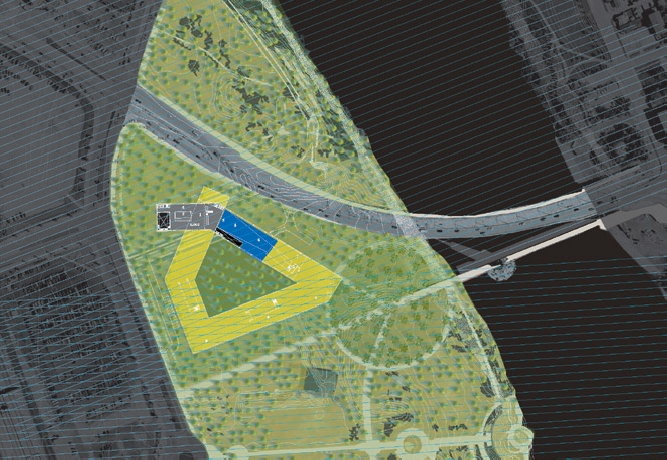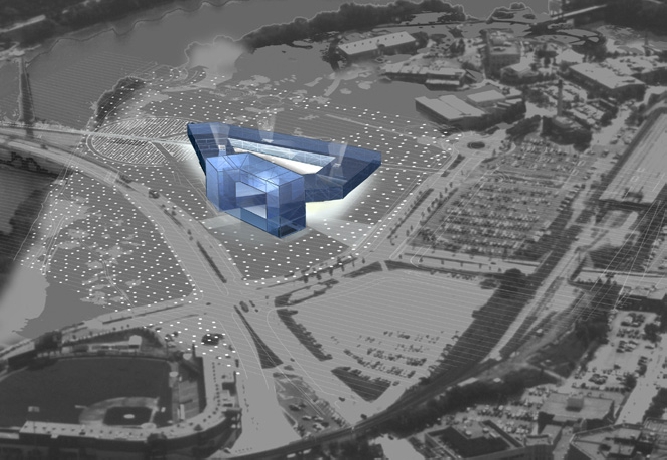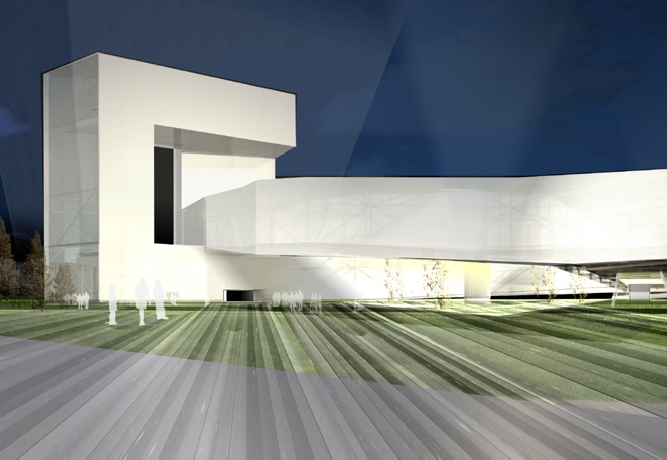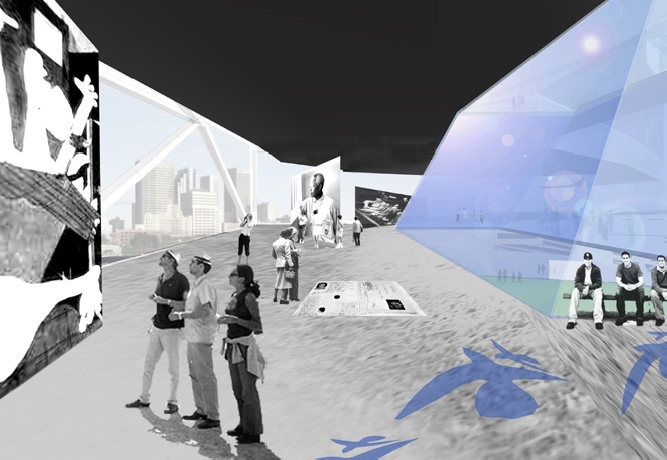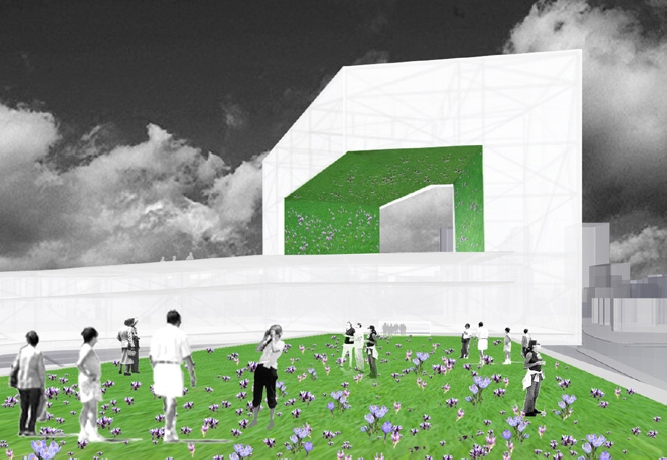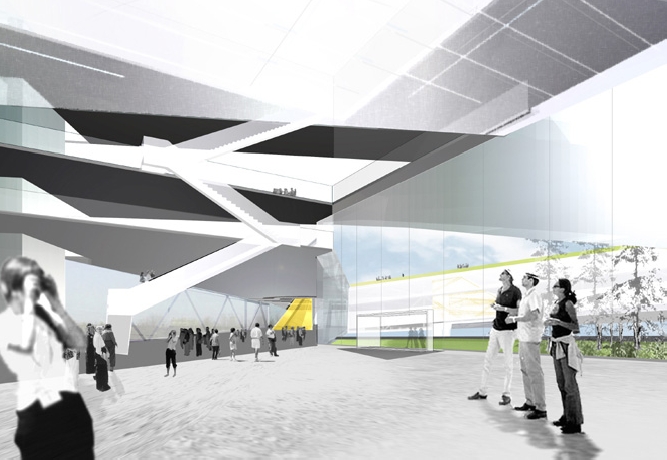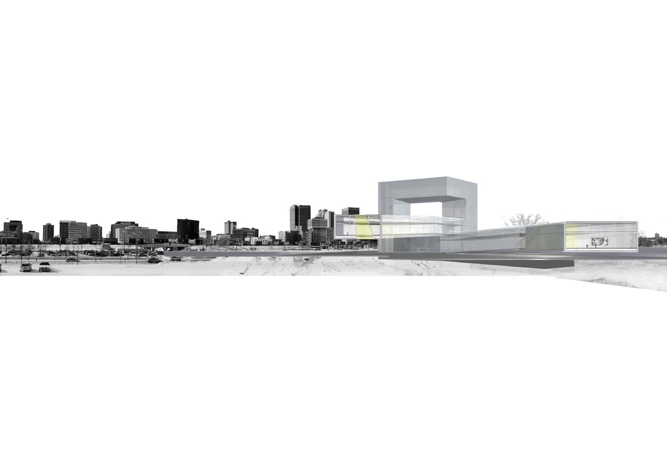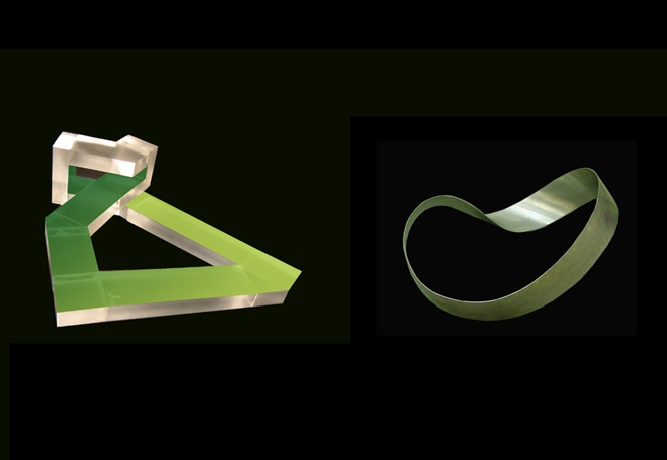Canadian Museum Of Human Rights Competition
| ARCHITECTS | Saia Barbarese Topouzanov architectes, les architectes Tétreault, Parent, Languedoc et associés, Claude Cormier architectes paysagistes, Yann Kersalé |
|---|---|
| LOCATION | Winnipeg, Canada |
| DATE | 2004 |
| CLIENT | Community/Government partnership initiative |
DESCRIPTION
Team : Dino Barbarese, Patrick de Barros, David Griffin, Louis-Charles Lanier, Jean-Louis Léger, Nadia Meratla, Marianne Potvin, Mario Saia, Vladimir Topouzanov In researching the history of the site, we aimed at grounding our response to the symbolic expectations of the Museum, an architectural form specific to place and yet resonant worldwide. Inspiration emerged from the Métis nation, ancestors of the meeting between Native North Americans and Europeans. Characterizing their identity, the Métis flag was marked with the symbol of infinity: the bridging of two cultures, continuing as a joint unity into the eternal future. Focusing on the construction of human rights, the museum’s form both recalls the historic meetings at the Forks, the proposed site, and describes a new major meeting place envisaged as a venue for strengthening relationships between communities today. The Grand Hall is sited at the crossing point of the looped paths, and extends visually into the central courtyard. As the museum is raised from the ground, this outdoor gathering space is completely open to the city and to the Red River. The symbol of infinity unfolds in three dimensions as a Möbius, a continuous path that reflects the historical struggle for human rights. The material continuity of the Möbius reminds the visitor that history is in perpetual movement: the present is a projection of the past, and is pregnant with the future. The architecture takes the continuous form of the history it narrates. In entering the building, the visitor physically enters into this continuum. This project was selected among 500 entries for the second stage of an International Competition
